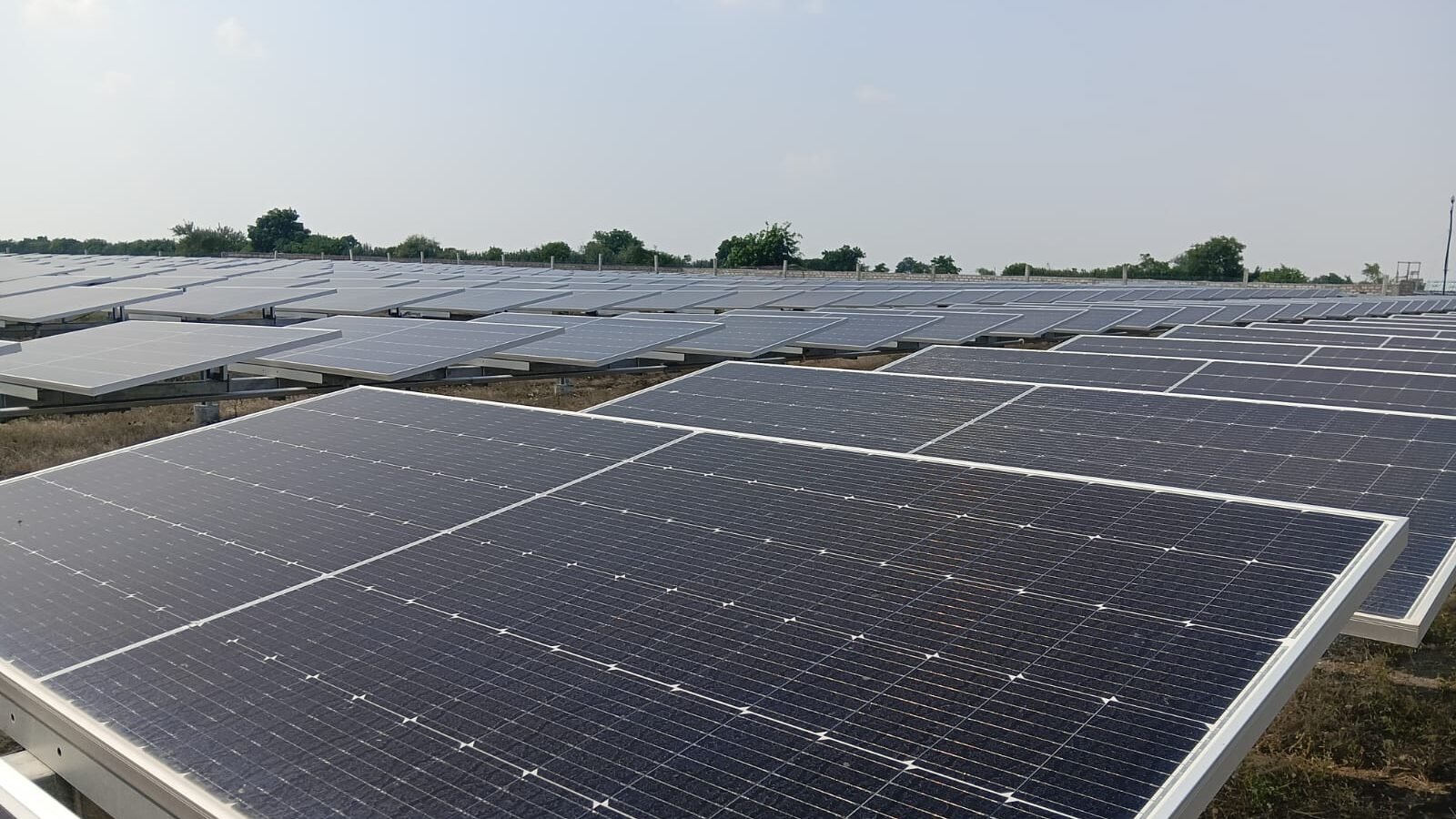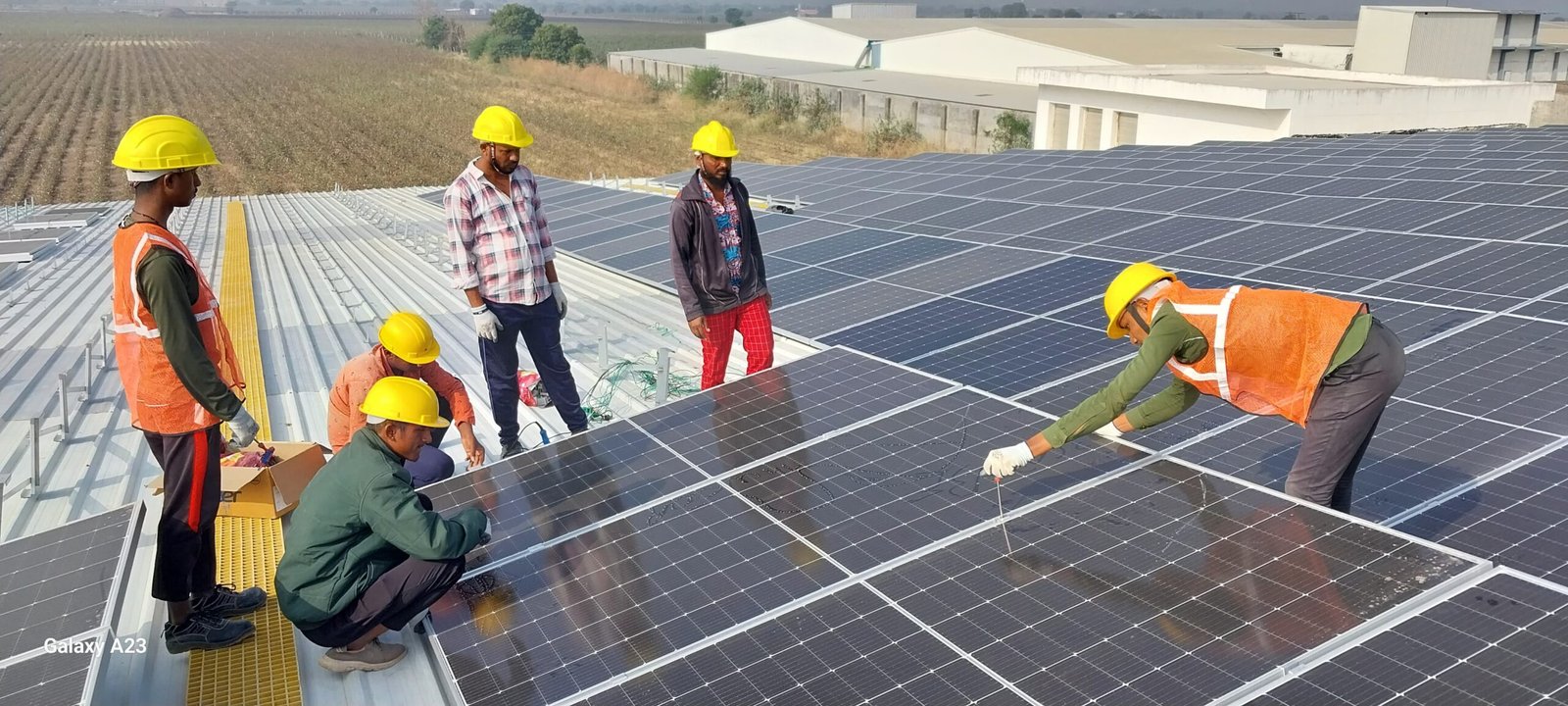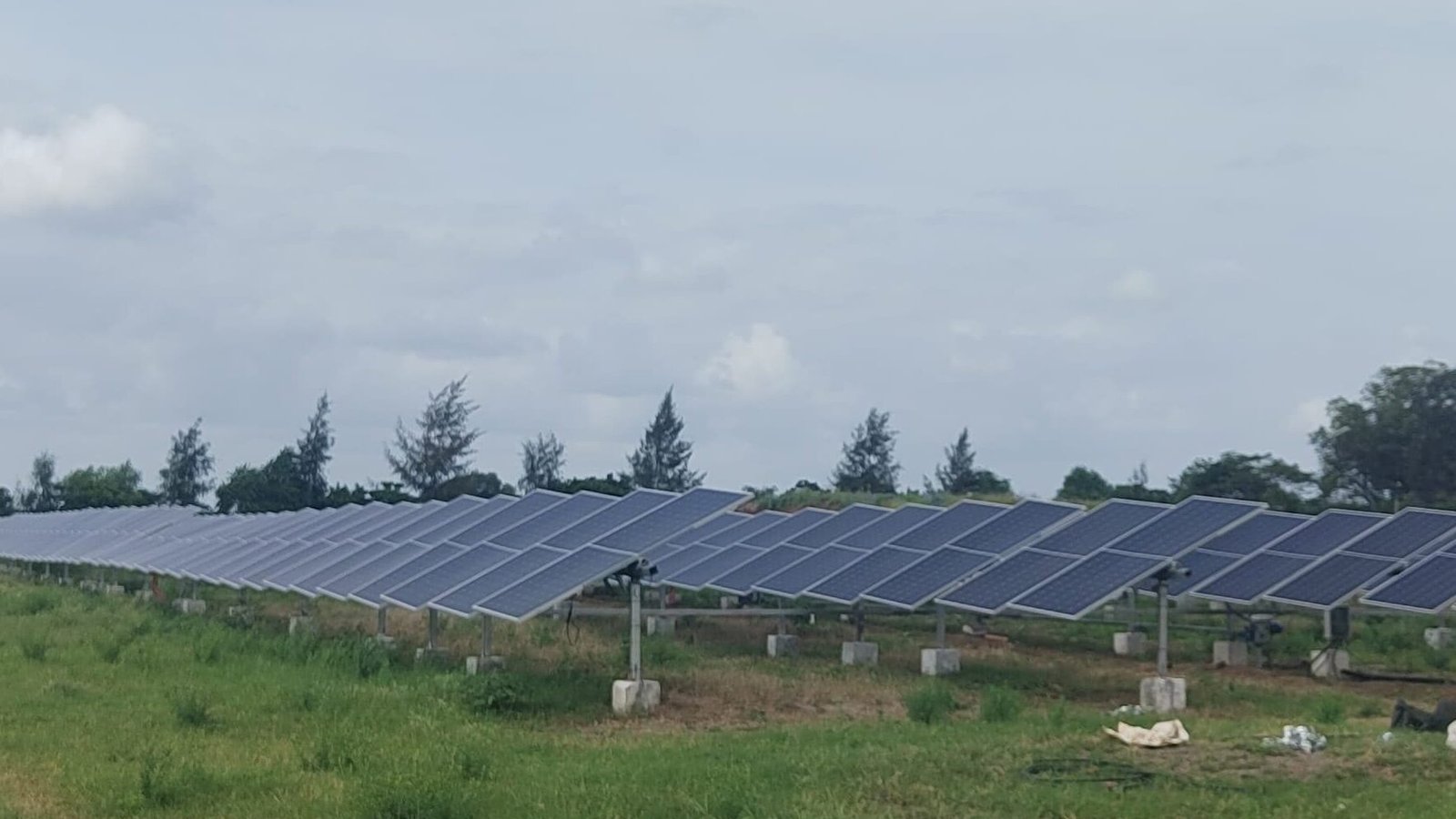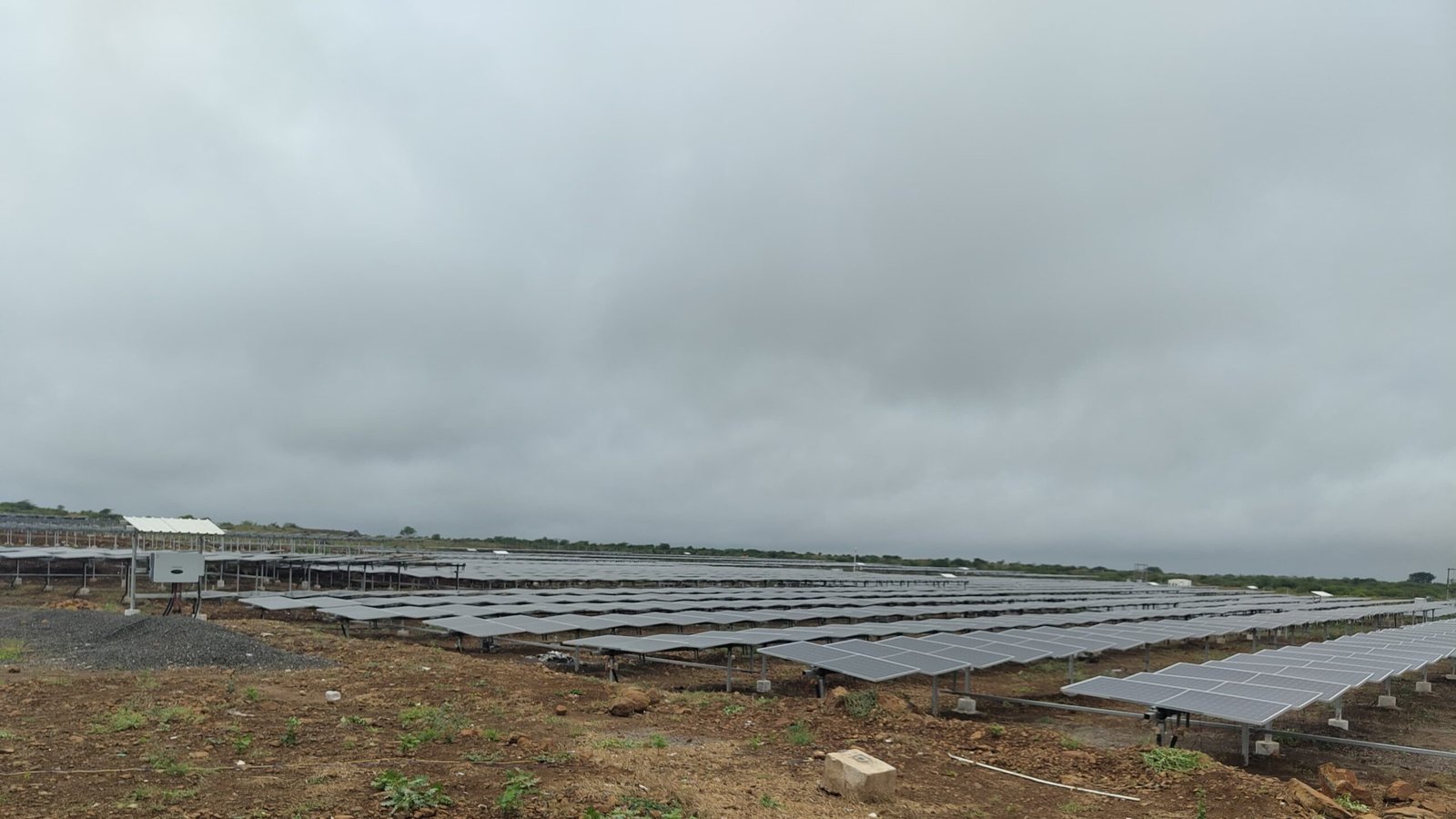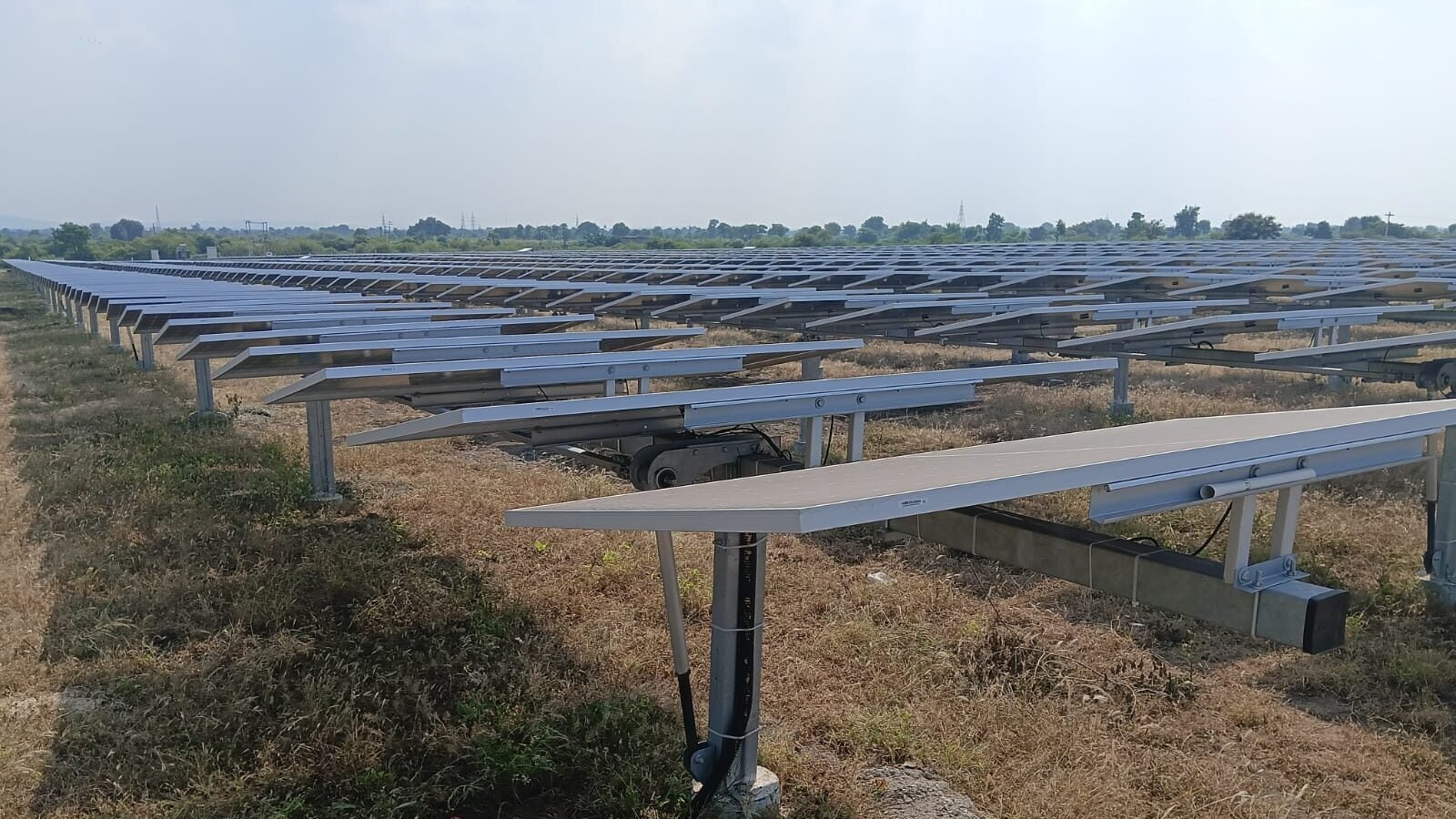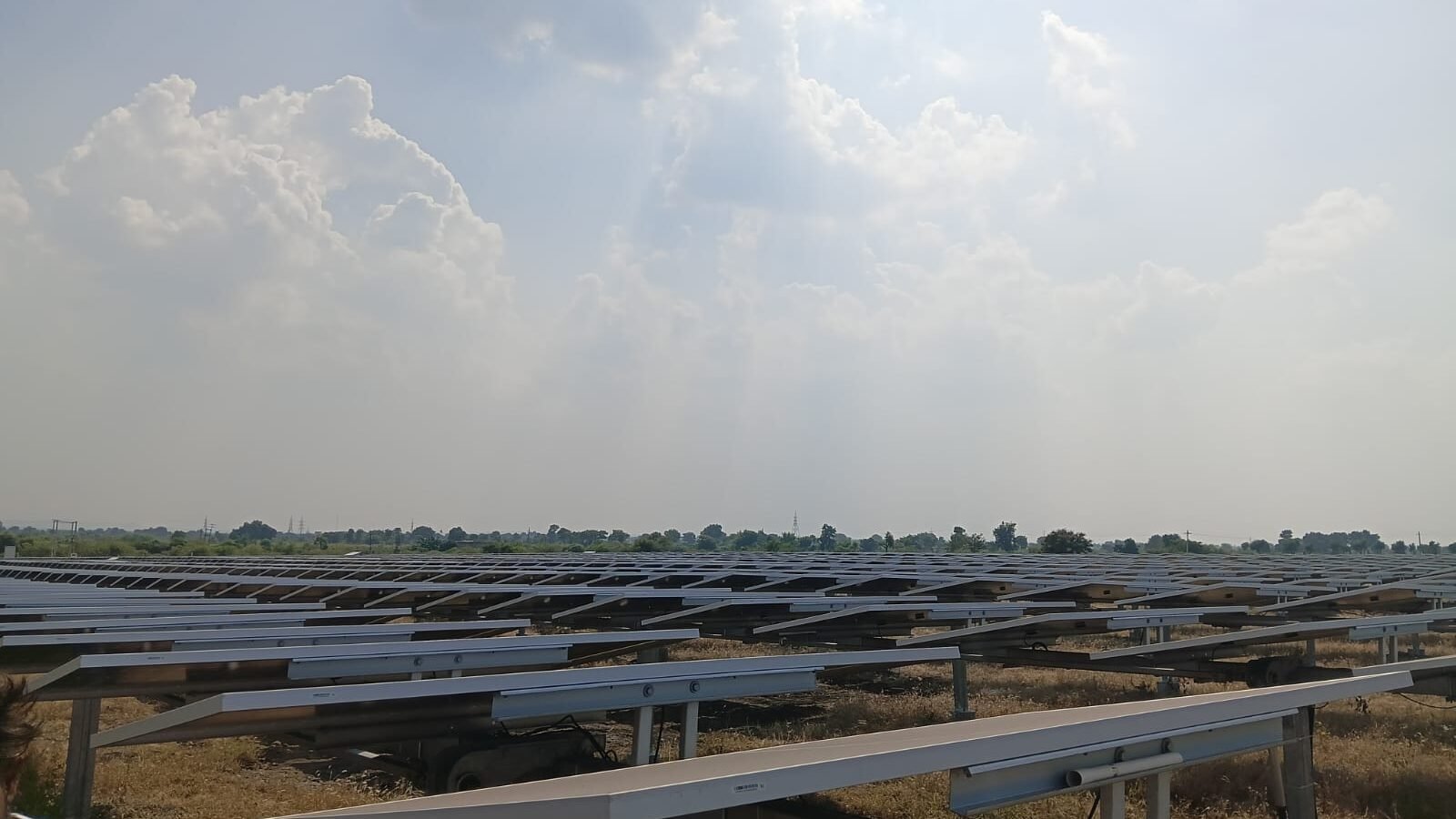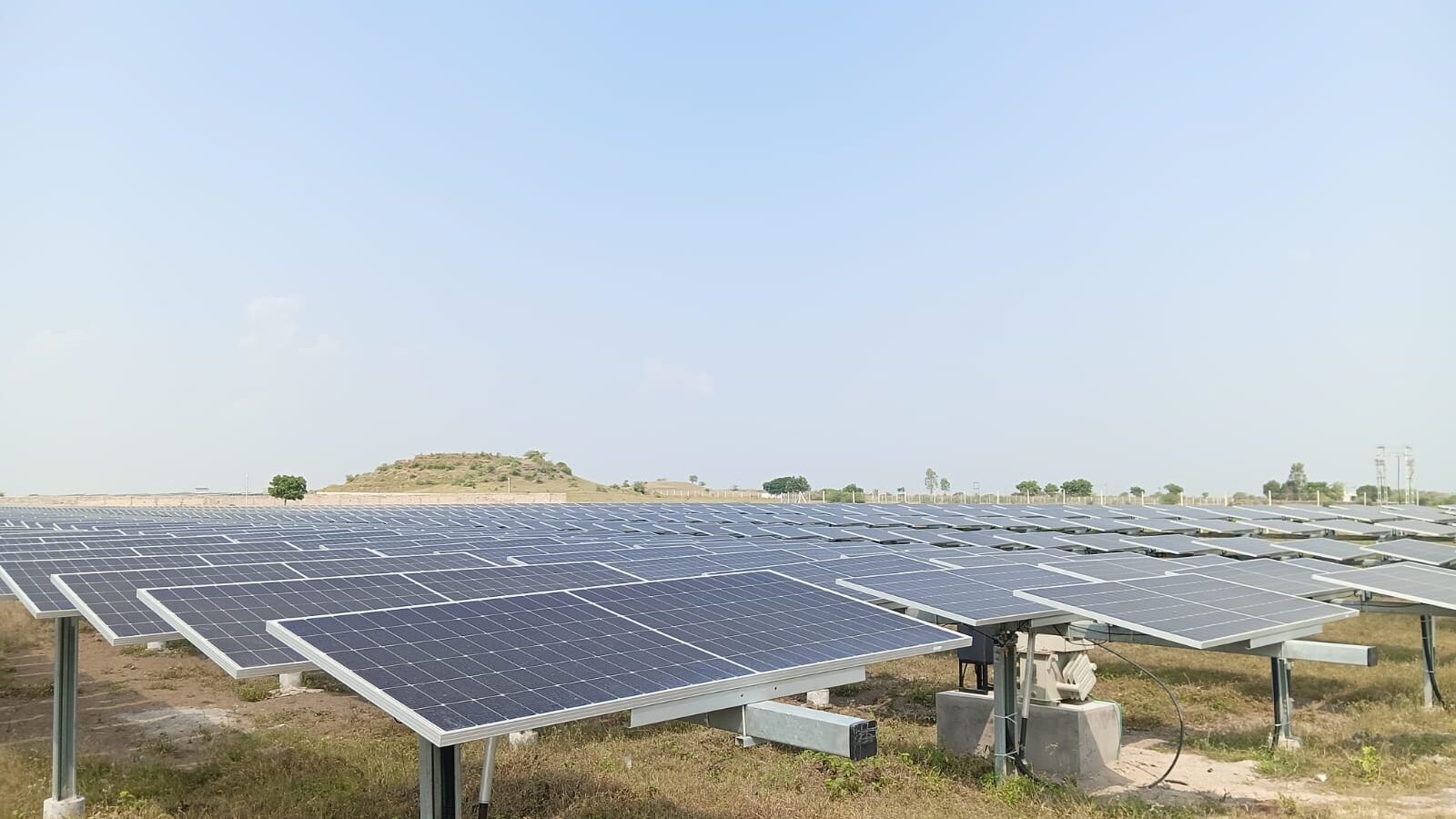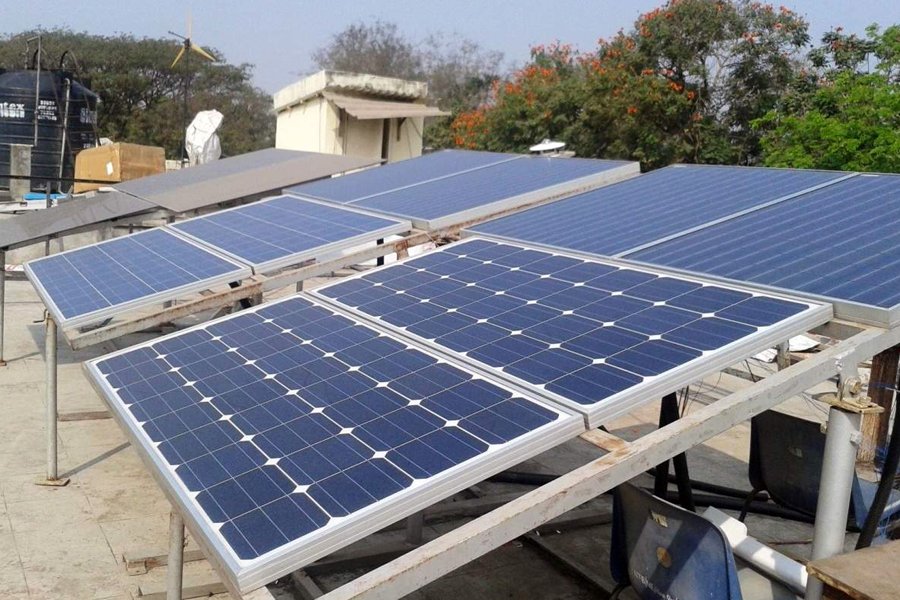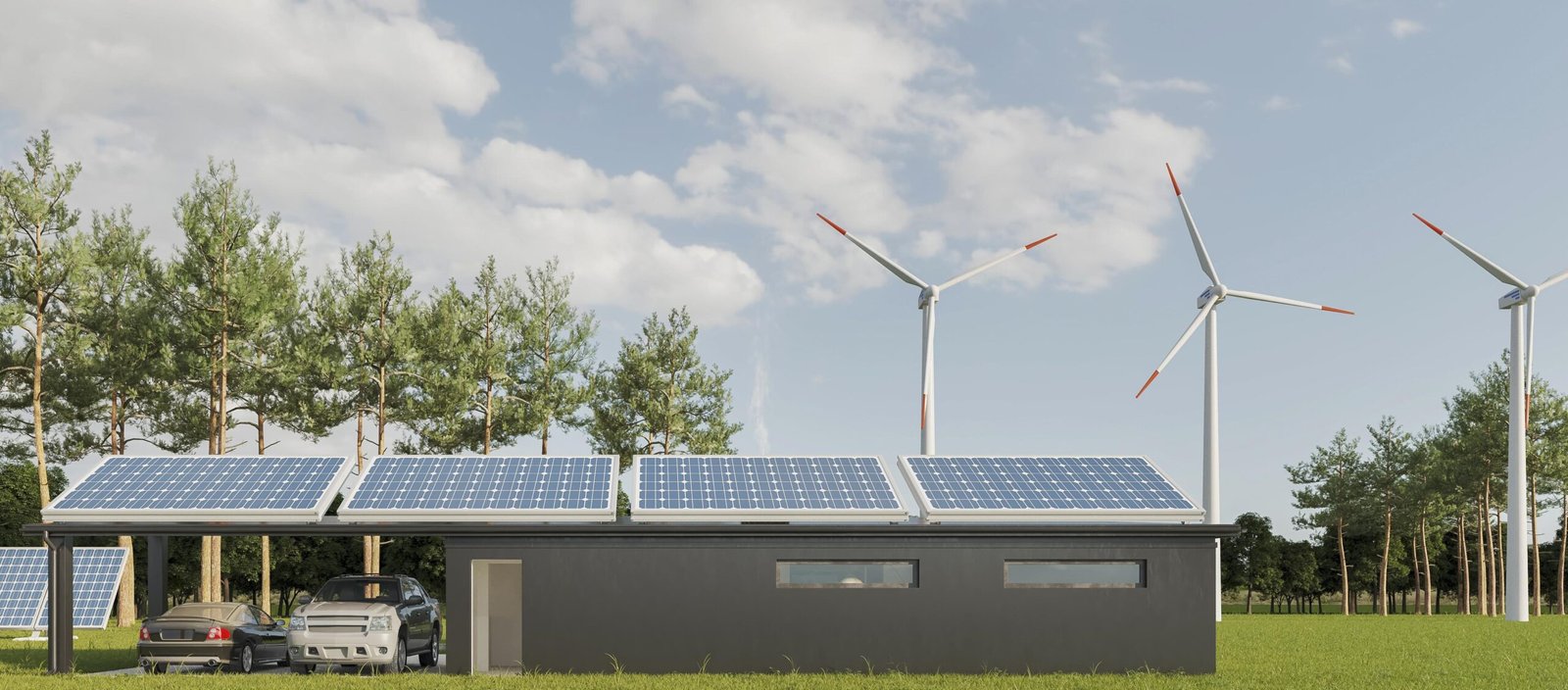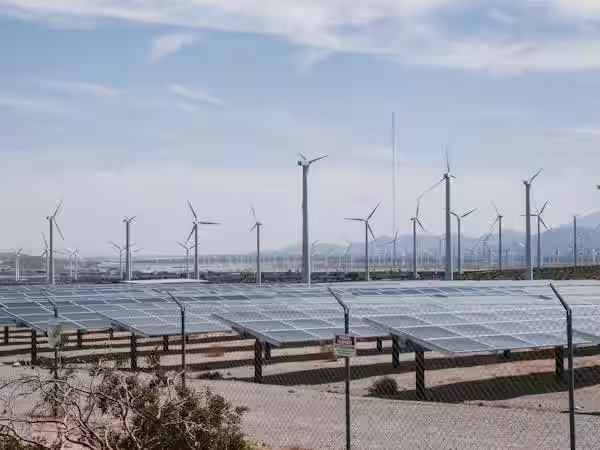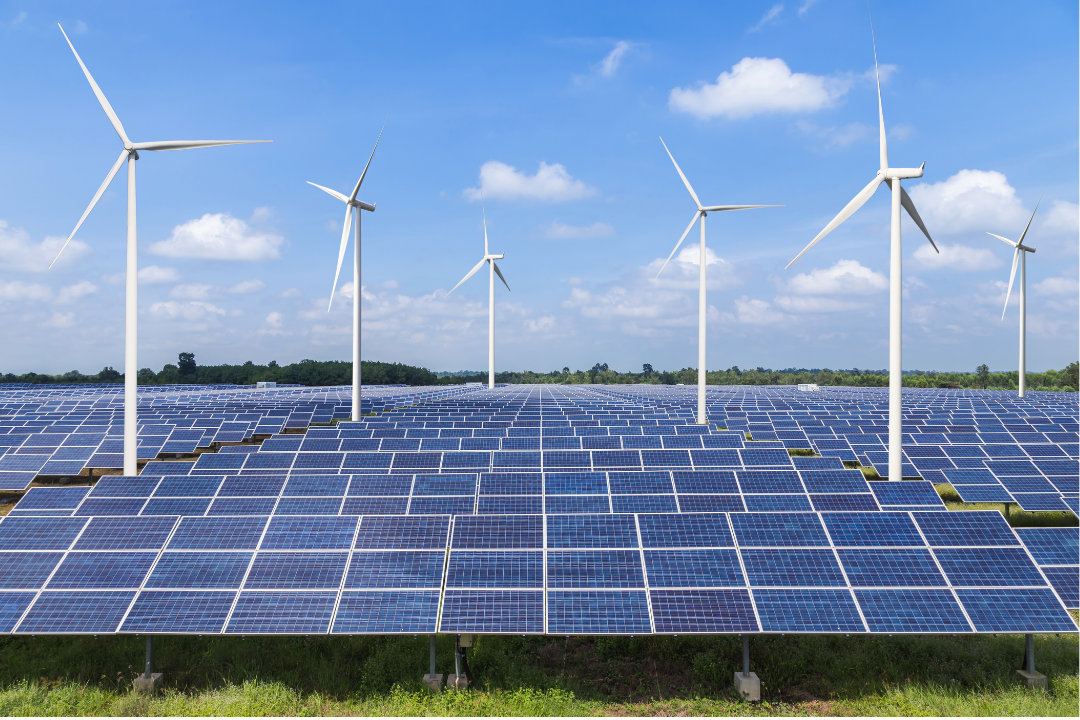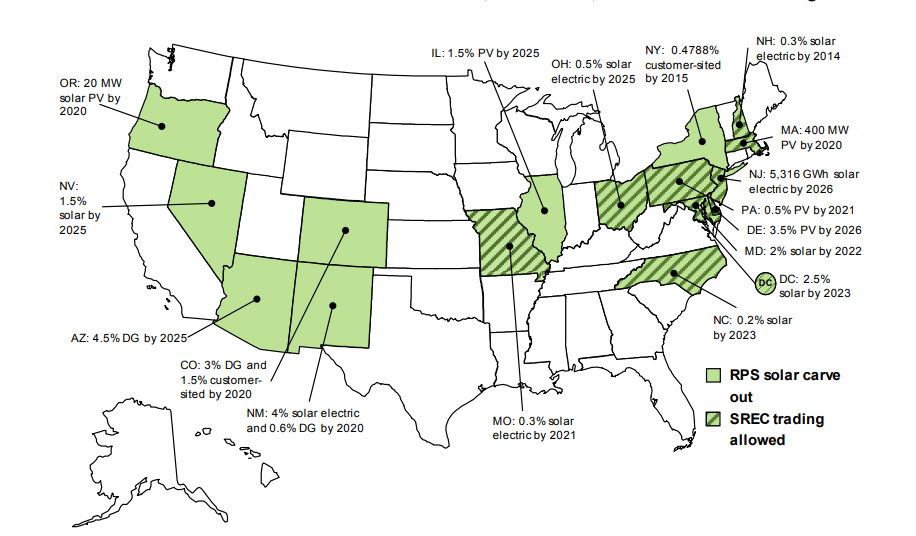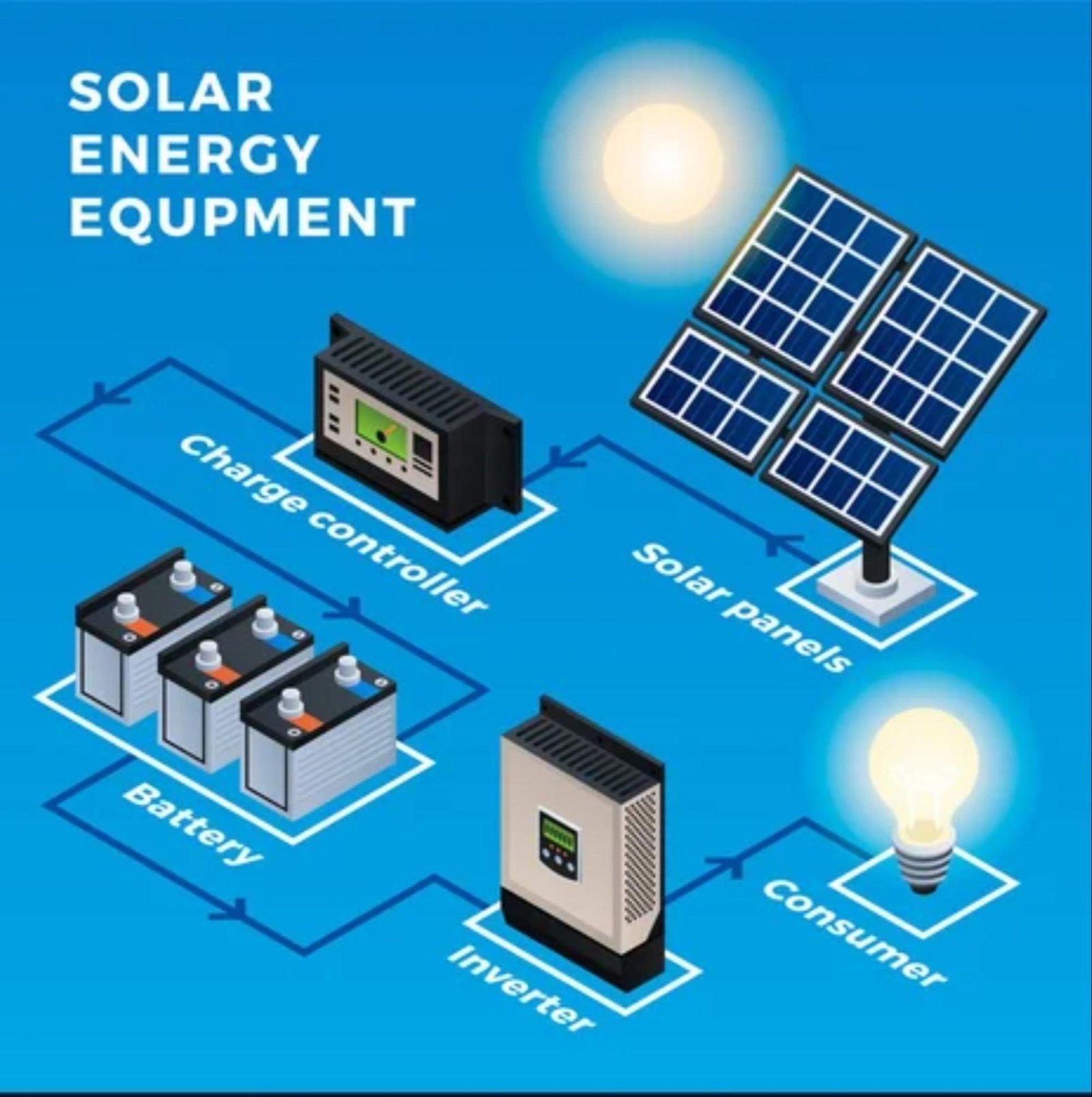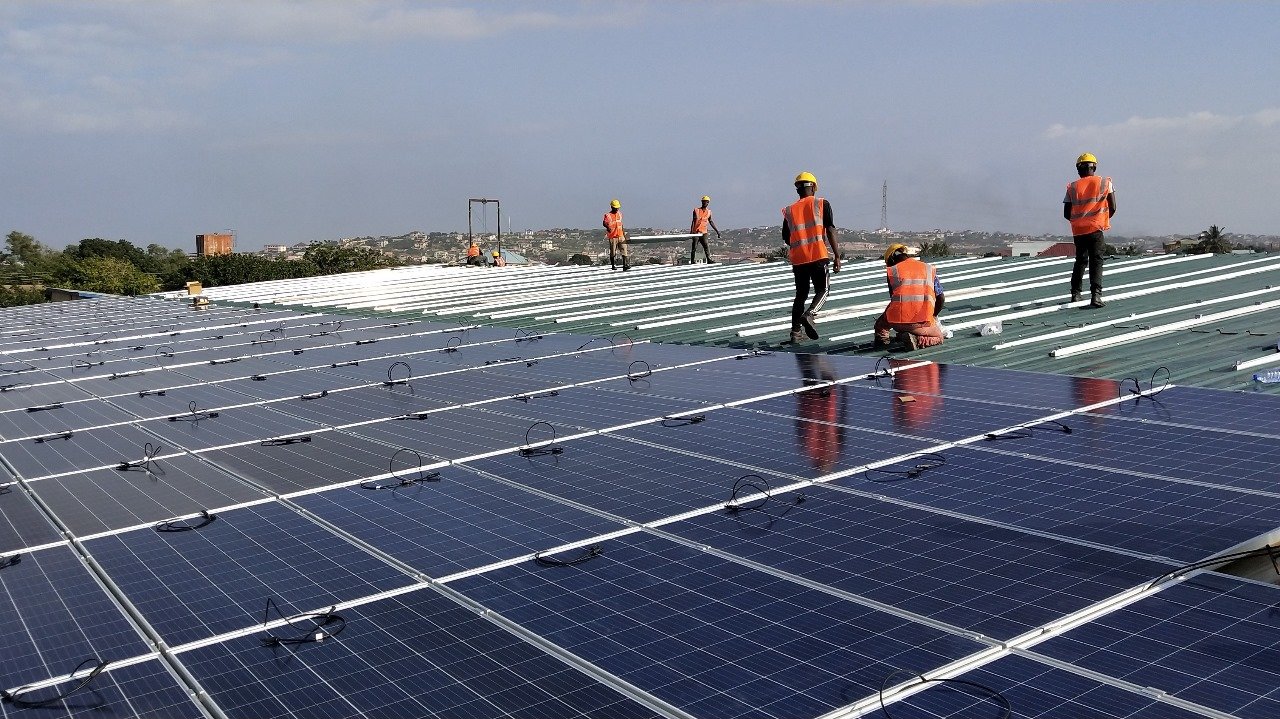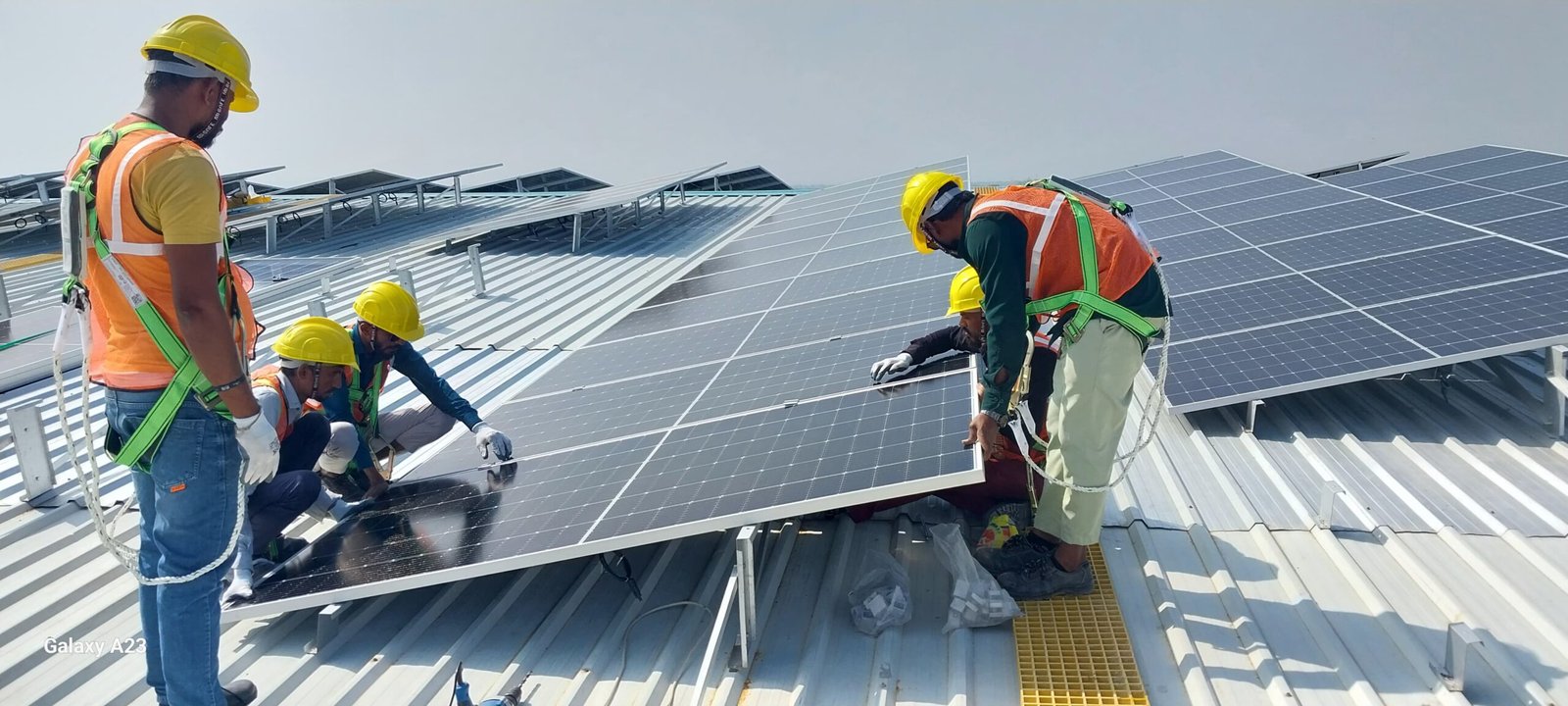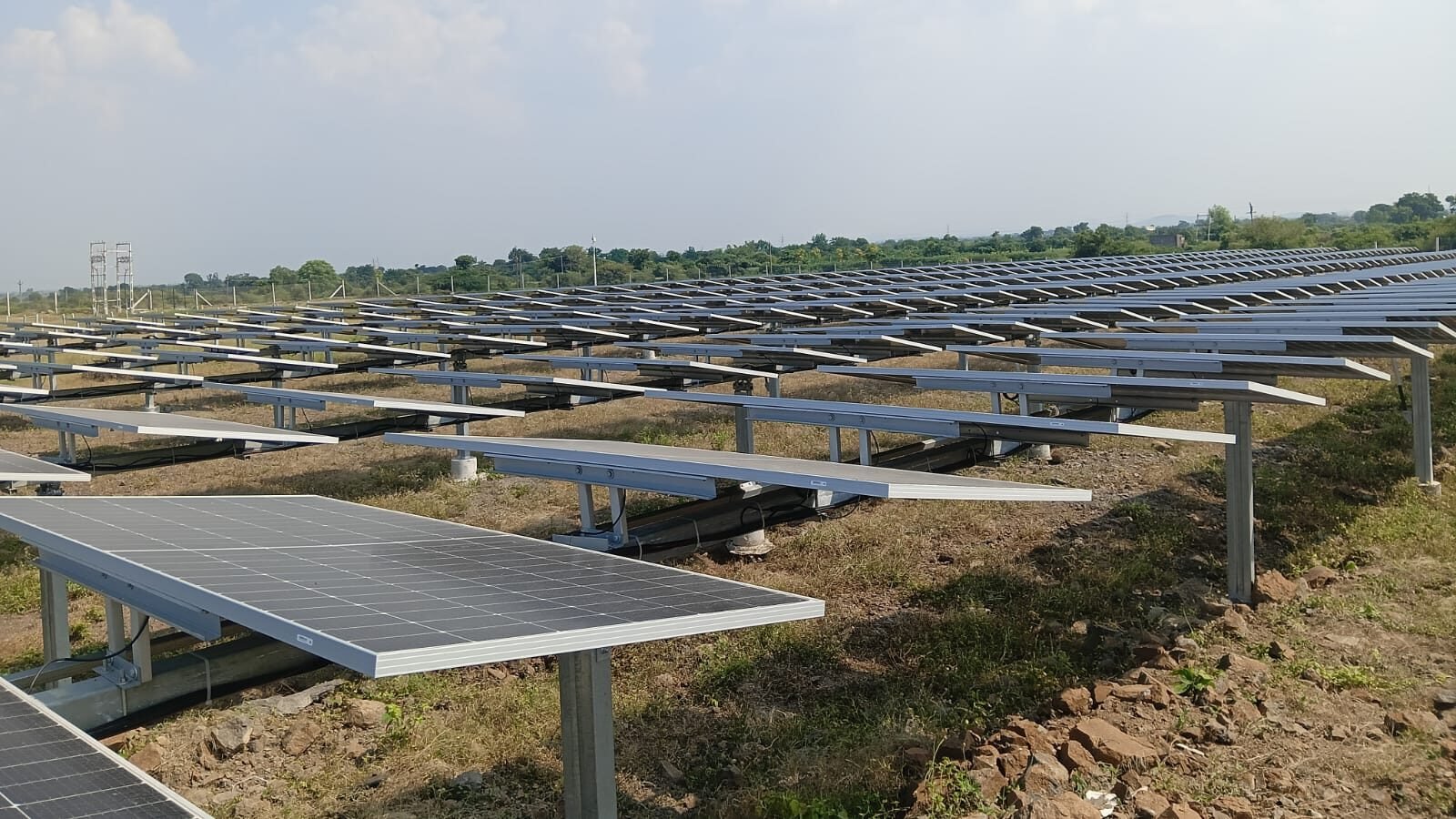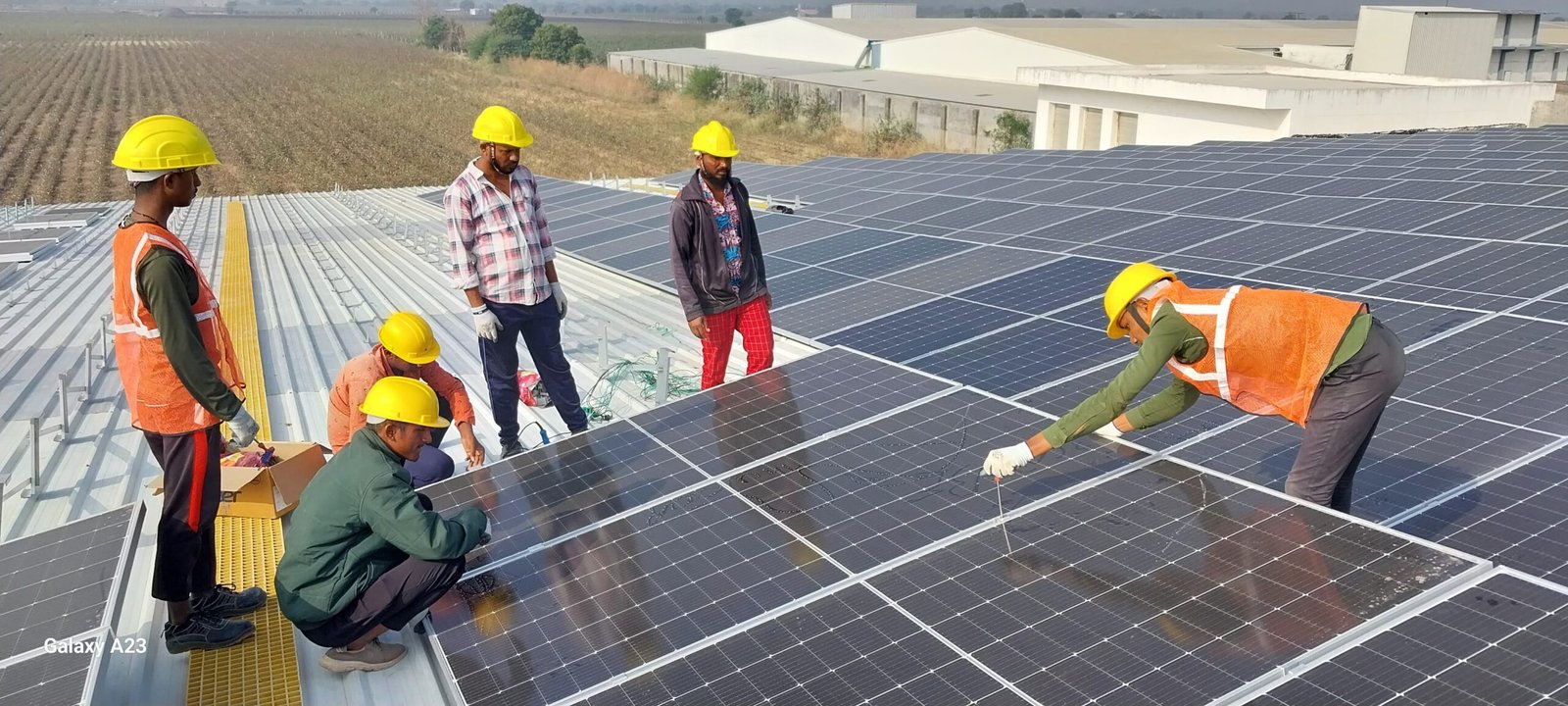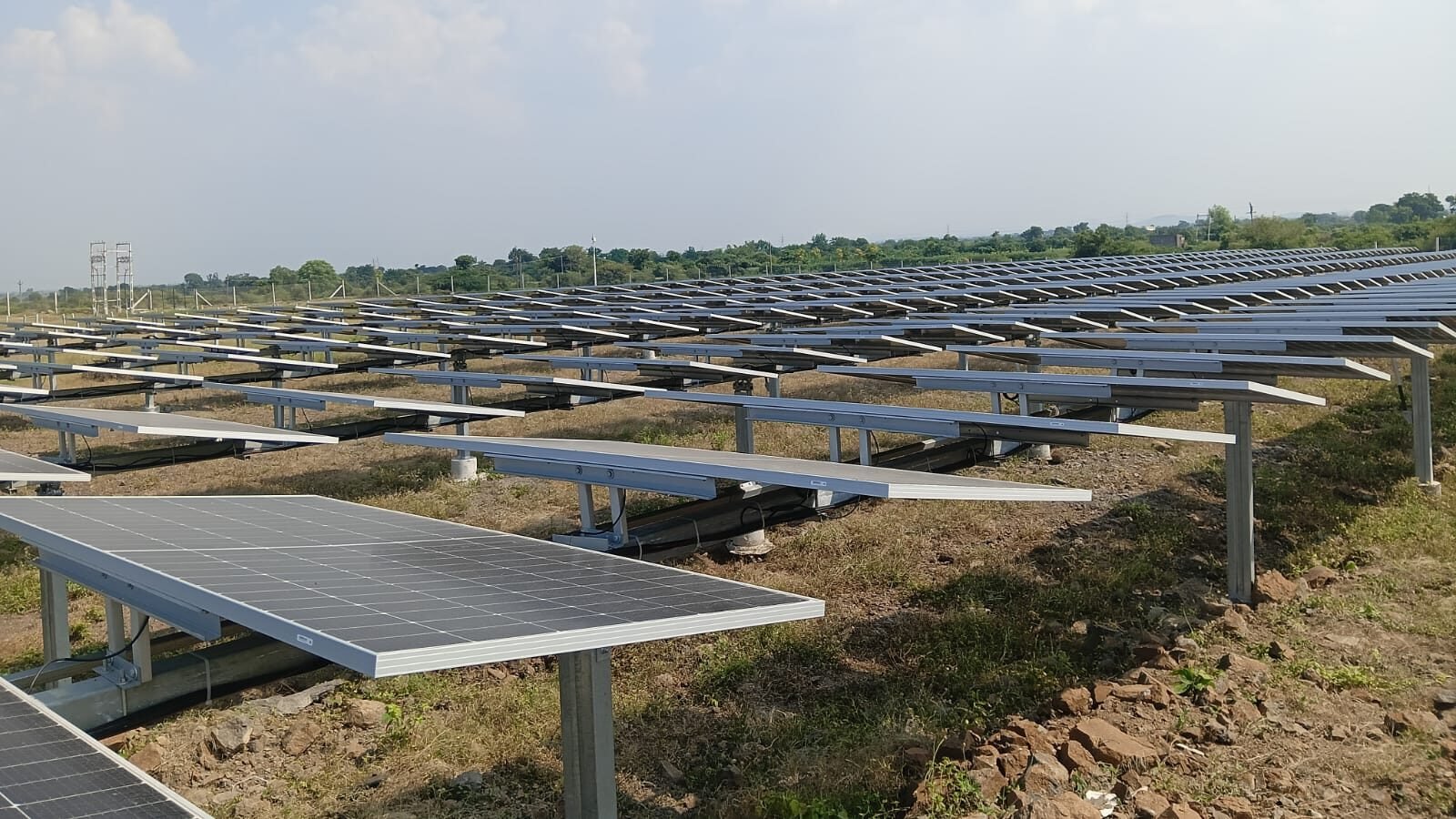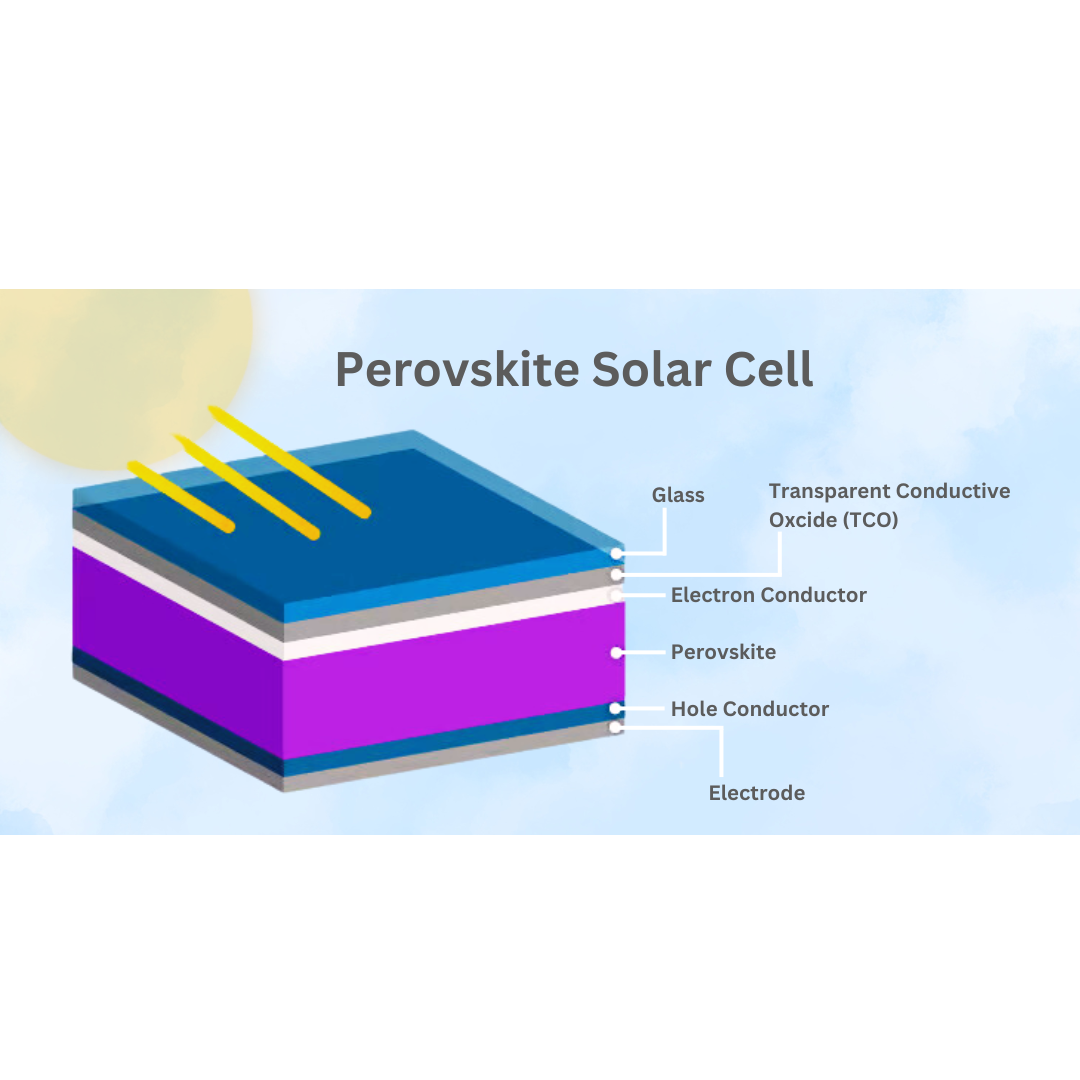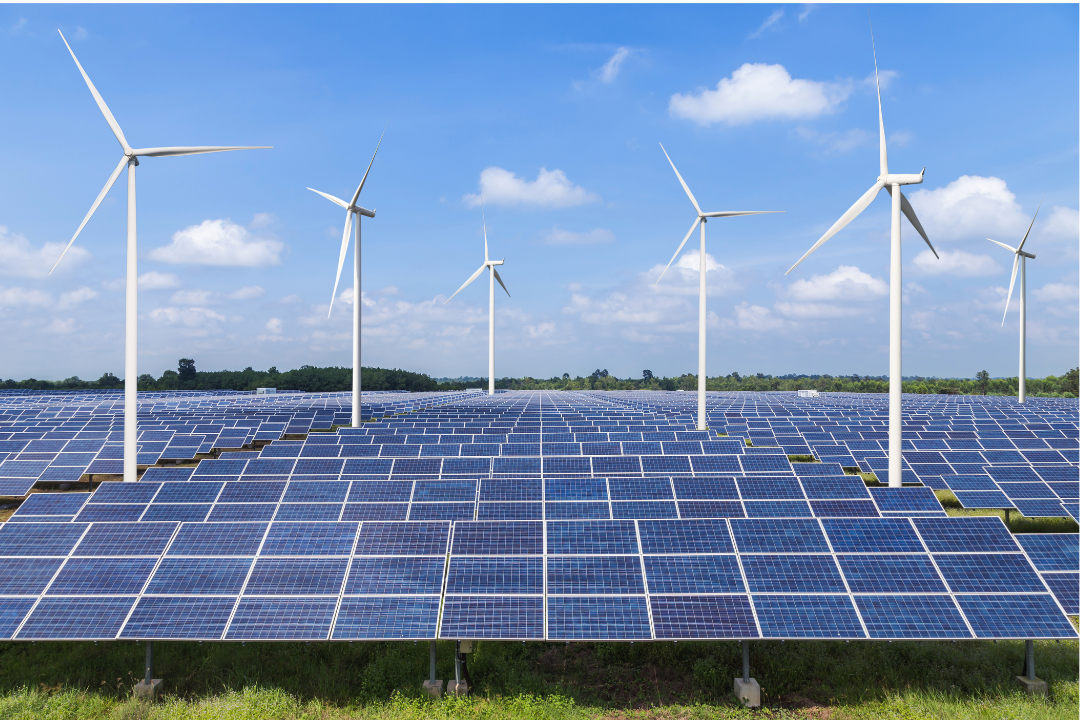In today’s era of sustainability and cost-efficiency, commercial solar panels are revolutionizing the way businesses consume and manage energy. With renewable energy becoming an essential part of corporate strategies, the adoption of commercial solar solutions is no longer a choice but a necessity. This comprehensive guide explores everything you need to know about commercial solar panels, from their benefits to installation processes, and how they contribute to a greener future.
Table of Contents
What Are Commercial Solar Panels?
A photovoltaic (PV) panel that generates electricity from sunshine is called a commercial solar panel. The process of turning sunshine into electricity is called photovoltaic. Commercial-grade photovoltaic (PV) solar panels are composed of silicon solar cells with positive and negative layers that generate an electric field. An array of commercial-grade solar panels can be created by wiring them together. A group of interconnected solar panels is called a solar array. Another name for them is “photovoltaic arrays.” They may be located on a building’s rooftop or a sizable plot of land. Since a building’s rooftop frequently receives the most sunshine, which is a renewable energy source for solar energy, rooftop commercial solar system projects are typical in C&I scale solar.
Benefits of Commercial Solar Panels
1. Cost Savings
- One of the main advantages of commercial solar panel systems is the financial savings they provide. By using solar energy, Indian businesses may drastically reduce their energy expenses and free up money that can be used to invest in other areas of the business. Given the escalating cost of power in India, solar energy may offer a more stable and predictable energy cost than traditional energy sources, which are susceptible to price fluctuations.
2. Increased Property Value
- The installation of a commercial solar panel system may help raise a company’s property value. As more businesses work to be more environmentally responsible, having a commercial solar panel system installed might be a big selling factor. Prospective homeowners or renters are often willing to pay more for properties with renewable energy systems because of the long-term cost savings they provide.
- Businesses may gain from investing in commercial solar panel systems in a variety of ways, such as reduced energy costs and the provision of a useful asset that will increase the value of their real estate and attract new customers and investors.
3. Energy Independence
- Commercial solar panel systems help companies become energy independent by allowing them to generate their own electricity and reducing their reliance on the national energy grid. This can help businesses avoid costly downtime and lost production, particularly at times of high demand or grid outages.
- By using a sustainable energy source like solar electricity, businesses may reduce their dependency on fossil fuels, improve energy security and stability, and make more confident plans. Businesses in India may generally profit greatly from solar power systems’ capacity to provide energy independence, which makes them more adaptable and sustainable in the face of changing energy markets and environmental concerns.
4. Long-Term Savings
- Commercial solar panel systems may help Indian businesses in the long run, despite the upfront investment required. These systems may save you a significant amount of money over time, and they are built to last for decades. Furthermore, solar energy systems require less maintenance, which can further reduce total expenses.

Types of Commercial Solar Panel Systems
1. Grid-Tied Solar Systems
- The most common type of solar electricity for homes and businesses worldwide is the grid-tied system, which connects to the local utility grid. Both residential and business settings find this arrangement especially appealing since it allows them to generate their power using solar panels. The system’s capacity to use the grid as a backup power source when solar production is insufficient to fulfill the property’s energy needs is one of its primary characteristics. A more sustainable connection with the current electrical infrastructure is facilitated by this dual capability.
- Advantages:
- Grid-tied solar systems offer financial benefits through net metering, reducing electricity bills and promoting renewable energy. They reduce greenhouse gas emissions and fossil fuel dependency, aligning with global sustainability goals.
- Grid-tied systems require fewer components, making them easier and less costly to maintain. The absence of batteries simplifies the system, ensuring a longer lifespan and simpler operation. This symbiotic relationship between solar producers and the utility grid encourages investment in solar technology.
2. Off-Grid Solar Systems
- An off-grid solar system is a solar panel system that generates electricity, stores that power in solar batteries, and runs independently from the power grid. These systems encourage off-the-grid living, a lifestyle centered around energy independence and self-sustainability.
- Advantages:
- Ideal for remote locations or areas with unreliable grid access.
- Provides full energy independence, reducing reliance on utility companies.
- No electricity bills since the system is fully self-sufficient.
3. Hybrid Solar Systems
- In order to maximize its potential, a hybrid solar system integrates both off-grid and on-grid technologies. It integrates grid power, battery storage, and solar panels. During the day, it absorbs solar energy and stores any extra energy in batteries for use at night or during blackouts.
- Advantages:
- Offers the benefits of both grid connectivity and energy independence.
- Ability to store excess energy in batteries for use during periods of low solar generation or grid outages.
- Can provide more stable energy savings and backup power.
Top 3 Commercial Solar Panel
1. Monocrystalline Solar Panels
What are Monocrystalline Solar Panels?
- Monocrystalline solar panels, sometimes referred to as mono panels, are made from monocrystalline solar cells. A piece of silicon crystal created especially for use in solar panels makes up each solar cell.
- In the lab, the crystal is formed into an ingot shape before being separated into thin discs. Octagons are formed by cutting or slicing the discs’ edges.
- When the solar cells are put on the solar panels, their octagonal shapes allow them to accommodate the greatest number of solar cells inside the array. This may be demonstrated by using octagonal cookies rather than round ones, as the former can accommodate more biscuits on the baking pan.
- Identifyable by their black hue, monocrystalline solar panels typically have an efficiency of 15% to 20%, while some more recent experimental models have even approached 50%.
Why Choose Monocrystalline Panels in 2025?
Monocrystalline solar panels are renowned for their high efficiency and long lifespan, making them the ideal choice for businesses looking to get the most out of their investment. Here’s why they’re a top choice for commercial applications in 2025:
- High Efficiency: Monocrystalline panels offer up to 22% efficiency, ensuring that your commercial solar power system generates more energy in less space. This is particularly important for businesses with limited rooftop space.
- Longevity and Durability: These panels are known for their longevity, often lasting 25 years or more with minimal degradation in performance. With proper maintenance, they can provide decades of reliable energy production.
- Space Efficiency: Due to their higher efficiency, monocrystalline panels are the perfect fit for businesses with limited roof space, making them a preferred choice for urban commercial solar panels.
- Aesthetic Appeal: These panels typically have a sleek, black appearance, blending well with modern architecture. This aesthetic advantage makes them an attractive option for businesses looking to maintain an appealing appearance while going green.
2. Polycrystalline Solar Panels
What are Polycrystalline Solar Panels?
- Polycrystalline solar cells are used to make individual solar cells. Another name for them is poly panels. Similar to monocrystalline solar cells, polycrystalline solar cells are made from silicon crystals. They vary from monocrystalline in that the silicon crystal does not release as a single pure ingot but instead cools and disintegrates on its own. After being broken up, these bits are melted in an oven to form cubes. After that, they are separated into thin wafers.
- Unlike mono panels, which have a single crystal, this amalgam is composed of several crystals. Because the manufacturing process is less demanding, more solar cells can be manufactured more quickly and at a lower cost than monocrystalline cells.
- There are no spaces between the neatly stacked blue square polycrystalline cells. Polycrystalline solar panels operate less effectively than monocrystalline ones because there is less room for electron flow in the former.
- Polycrystalline solar panels are often rated between 13% and 16% efficient. For a few solar panels, the percentage difference might not seem like much, but for many solar panels, the amount can be doubled.
Why Choose Polycrystalline Panels in 2025?
Polycrystalline panels have evolved over the years, and they now offer a more cost-effective solar solution for businesses without compromising performance. Here’s why they’re a top contender for commercial installations in 2025:
- Affordable Investment: Polycrystalline panels are typically less expensive than monocrystalline panels, making them a great option for businesses with budget constraints. They provide excellent value for businesses looking to make the switch to solar without a significant upfront investment.
- Sufficient Efficiency: Although not as efficient as monocrystalline panels, polycrystalline panels still offer an efficiency rate of around 16-18%. This makes them suitable for businesses with larger rooftop areas where space is not as critical.
- Sustainability: As with all solar panels, polycrystalline systems help reduce your carbon footprint. By choosing polycrystalline panels, businesses can contribute to a greener future while saving on energy costs.
- Decent Lifespan: Polycrystalline solar panels typically last around 20-25 years, with minimal maintenance required. Over their lifespan, they provide substantial savings on energy bills, making them a worthwhile investment.
3. Thin-Film Solar Panels
What are Thin-Film Solar Panels?
- Photovoltaic (PV) components are layered thinly in thin-film solar panels, which use sunlight to generate energy. Usually, these layers are just a few micrometers thick. They are perfect for applications with limited space since they may be applied to a variety of substrates, including metal, glass, and plastic.
- Compared to conventional crystalline silicon solar panels, thin-film solar panels are significantly lighter and more flexible, making installation in a variety of settings simpler. Additionally, they are far less expensive, which makes them a desirable choice for people on a budget who want to employ renewable energy sources.
- Thin-film solar panels are created utilizing a variety of materials, including amorphous silicon (a-Si), cadmium telluride (CdTe), gallium arsenide (GaAs), and copper indium gallium selenide (CIGS), in contrast to typical PV panels, which are made solely using silicon wafers.
- On the other hand, thin-film solar panels function just like their conventional counterparts. Using the photovoltaic effect, the semiconductor material stacked on top of the substrate transforms light energy into electrical energy, much like silicon wafers do.
- The simplicity of manufacturing flexible thin film solar panels is one of the main factors contributing to their rising popularity. Reduced expenses translate into more sales and turnover, a more affordable solution for customers or users, and more profits for producers and vendors.
Why Choose Thin-Film Panels in 2025?
Thin-film panels offer unique advantages that make them ideal for specific commercial applications, especially where traditional panels may not be viable. Here’s why thin-film solar panels should be considered in 2025:
- Flexibility and Versatility: Thin-film panels can be applied to a variety of surfaces, including curved roofs or walls, making them ideal for commercial buildings with unconventional roofing structures. Their flexibility allows businesses to harness solar energy in ways that traditional panels cannot.
- Lightweight Design: Unlike heavy monocrystalline and polycrystalline panels, thin-film panels are lightweight, reducing the load on the building structure. This can be particularly beneficial for older buildings or commercial structures with weight restrictions.
- Lower Initial Cost: Thin-film solar panels are typically less expensive than both monocrystalline and polycrystalline panels. While their efficiency is lower (around 10-12%), their lower cost and unique applications may make them a better choice for certain types of commercial buildings.
- Aesthetically Pleasing: Thin-film panels have a sleek, dark appearance that can blend well with modern architectural designs. Businesses looking for an alternative to traditional panels with a more integrated aesthetic will find thin-film panels an attractive choice.
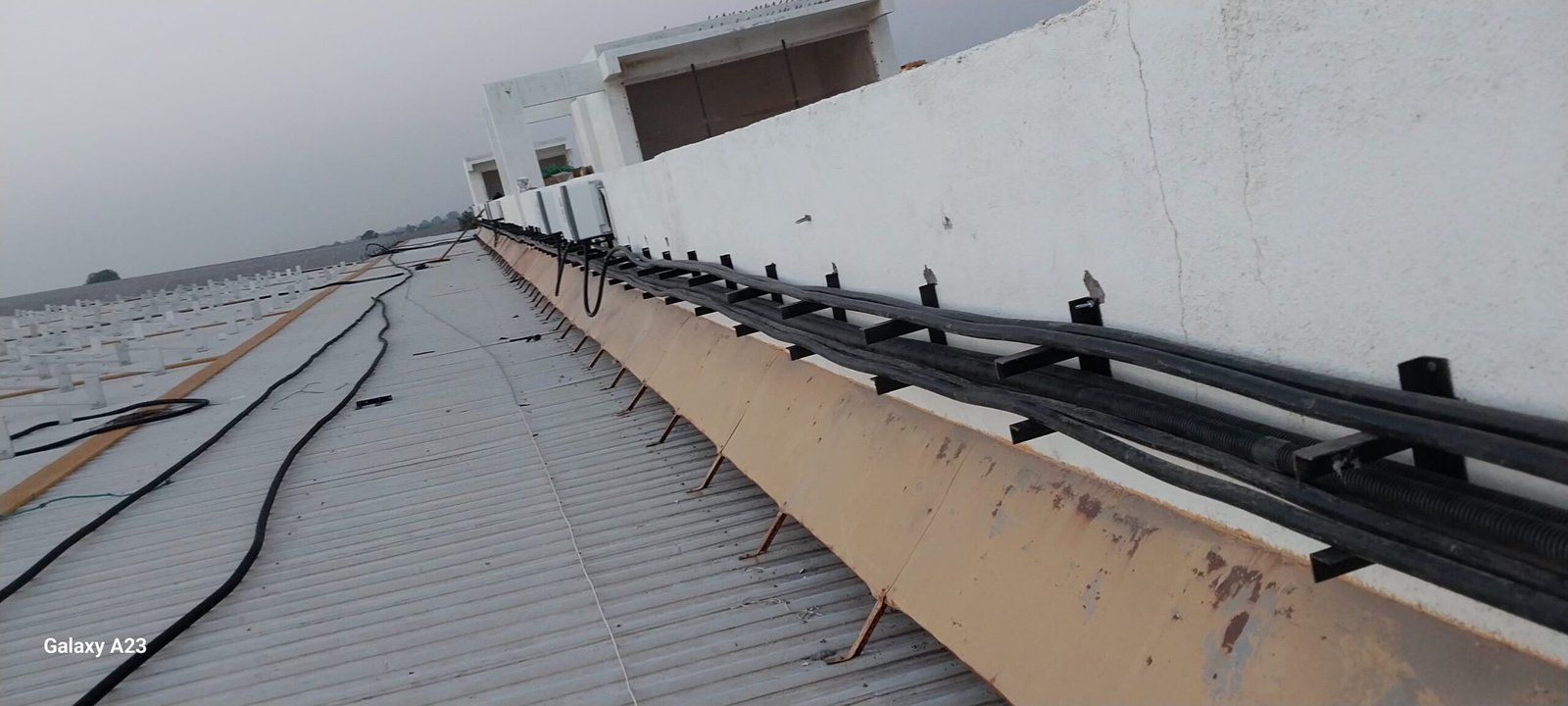
How Commercial Solar Panels Work
- Solar Panel Installation: Panels capture sunlight and convert it into direct current (DC).
- Inverter Conversion: Inverters convert DC into alternating current (AC) for business operations.
- Energy Distribution: Electricity is distributed to power commercial facilities.
- Excess Energy Management: Surplus energy is stored in batteries or sent back to the grid, depending on the system.
Factors to Consider Before Installation
1. Energy Requirements and Consumption Patterns
- Assess Energy Needs: Analyze your business’s current energy consumption to determine the appropriate size and capacity of the solar system.
- Peak Usage Times: Identify peak energy usage periods to optimize solar energy production and storage.
2. Roof Condition and Structural Integrity
- Roof Assessment: Ensure your roof can support the weight of solar panels and is in good condition. If the roof requires repairs or replacement, address these issues before installation.
- Structural Evaluation: Consult with a structural engineer to confirm that the building can handle the additional load.
3. Sunlight Exposure and Site Assessment
- Solar Potential: Evaluate the amount of direct sunlight your location receives throughout the year. Obstructions like nearby buildings or trees can affect solar efficiency.
- Shading Analysis: Conduct a shading analysis to identify potential obstructions that could reduce solar panel performance.
4. Regulatory Compliance and Permits
- Local Regulations: Research local building codes, zoning laws, and any restrictions related to solar installations.
- Permitting Process: Understand the necessary permits and approvals required for installation.
5. Financial Considerations
- Cost Analysis: Calculate the total installation costs, including equipment, labor, and any additional infrastructure.
- Incentives and Rebates: Explore available government incentives, tax credits, and rebates that can offset installation expenses.
- Return on Investment (ROI): Estimate the payback period and long-term savings to assess the financial viability of the project.
6. System Design and Equipment Quality
- Panel Selection: Choose high-quality, durable solar panels with a proven track record to ensure longevity and efficiency.
- Inverter Quality: Select reliable inverters, as they are crucial for converting DC to AC power and significantly impact system performance.
7. Installation Company Credentials
- Licensing and Certification: Verify that the installation company is licensed, certified, and insured to perform commercial solar installations.
- Experience and Reputation: Research the company’s experience in the industry and review customer testimonials to ensure quality service.
8. Maintenance and Warranty
- Maintenance Requirements: Understand the maintenance needs of the solar system to ensure optimal performance over time.
- Warranty Terms: Review the warranty provided for both equipment and installation services to protect your investment.
9. Energy Storage Options
- Battery Storage: Consider integrating battery storage to store excess energy for use during non-sunny periods, enhancing energy independence.
- Grid Connectivity: Decide whether to remain connected to the grid or opt for an off-grid system, based on your energy needs and local regulations.
10. Environmental Impact and Sustainability Goals
- Carbon Footprint Reduction: Assess how the solar installation aligns with your company’s sustainability objectives and environmental commitments.
- Corporate Social Responsibility (CSR): Consider the positive impact on your company’s CSR profile by adopting renewable energy solutions.
Installation Process of Commercial Solar Panels
1. Site Evaluation
Before any installation begins, a thorough site evaluation is crucial. This includes legal reviews to ensure permissions, determining grid connection points, and evaluating the property for shade, structure, and geological suitability.
2. System Design
Following site evaluation, the system design phase formalizes the installation plans. Detailed drawings outline panel placement for optimal sunlight capture, whether on rooftops, ground mounts, or solar carports.
3. Construction
Construction timelines vary based on project complexity. Smaller rooftop installations can be completed in 2-3 weeks, while larger projects may take several months. Careful planning minimizes disruptions, but businesses should prepare for temporary adjustments like parking changes or brief power shutdowns.
4. Commissioning
Once construction finishes, commissioning ensures the system aligns with design specifications. This step includes utility approval to connect the solar installation to the local power grid, marking the start of clean energy production.
5. Operation and Maintenance (O&M)
Proper maintenance enhances system longevity and efficiency. O&M responsibilities are outlined in your contract, typically covering annual inspections, warranty repairs, performance monitoring, and occasional cleaning. Choosing a reputable installer with strong O&M support ensures continued system performance and optimal energy generation.

Cost of Commercial Solar Panels
The size of the system and other variables affect the cost of installing commercial solar panels. A business solar system typically costs ₹1,60,000 per kW. A 100 kW system, for instance, may cost around ₹2,00,00,000, but a 1 MW installation might cost ₹20,00,00,000. System size, panel type, installation difficulty, and location all affect costs. Businesses find solar energy to be an appealing investment since government subsidies and financing choices may drastically lower these expenses. Use our Solar Calculator or request a bespoke quotation for a precise estimate and thorough cost breakdown.
- System Size: Larger systems typically have a lower per-watt cost.
- Type of Panels: Advanced panels like monocrystalline are costlier but more efficient.
- Installation Complexity: Ground-mounted systems may incur additional costs compared to rooftop installations.
- Incentives: Government subsidies and tax credits can significantly reduce upfront costs.
Challenges in Adopting Commercial Solar Panels
High Initial Investment
- The upfront costs for purchasing and installing commercial solar panels can be substantial. This significant investment may deter businesses, especially those with limited capital or those concerned about the long payback period.
Regulatory and Policy Barriers
- Inconsistent net metering policies across different states can create confusion and hinder the adoption of solar energy. Additionally, bureaucratic delays and complex permitting processes can slow down the installation of solar systems.
Grid Integration Challenges
- Integrating solar power into the existing grid infrastructure can be complex. Issues such as grid stability, energy storage solutions, and the financial health of electricity distribution companies (discoms) can affect the efficiency and reliability of solar energy supply.
Lack of Awareness and Technical Expertise
- A general lack of awareness about the benefits and feasibility of solar energy among businesses can impede adoption. Additionally, there is a shortage of skilled professionals with the necessary technical expertise to design, install, and maintain commercial solar systems.
Quality and Reliability Concerns
- The market has been flooded with low-quality solar panels, leading to concerns about the durability and efficiency of solar installations. Businesses may hesitate to invest in solar energy due to fears of subpar performance and potential maintenance issues.
Financing and Incentive Limitations
- While there are government incentives and subsidies available, accessing these financial aids can be challenging due to bureaucratic hurdles. Moreover, the financing options may not be sufficient to cover the high initial costs, making it difficult for businesses to invest in solar energy.
Infrastructure and Space Constraints
- Not all commercial buildings have the necessary infrastructure or space to accommodate solar panels. Structural limitations, such as roof age and condition, can affect the feasibility of installing solar systems.
The Future of Commercial Solar Panels
1. Technological Advancements
- Enhanced Efficiency: Ongoing improvements in photovoltaic cell efficiency and the development of thin-film solar panels are enabling industries to generate more power from limited space and under varying weather conditions.
- Smart Solar Integration: The integration of solar panels with smart technology, including sensors and IoT devices, allows for real-time performance monitoring and optimization of energy production. Companies like Tata Power Solar are already offering smart solar solutions to Indian consumers.
2. Government Initiatives
- Policy Support: The Indian government is implementing policies to promote solar energy adoption, including incentives and subsidies for commercial installations. The National Solar Mission aims to position India as a global leader in solar power by encouraging investment in solar projects.
- Manufacturing Growth: India is expanding its solar panel manufacturing capacity, with projections to reach 25 GW for solar cells and 60 GW for solar modules by the end of 2025. This growth is expected to reduce dependence on imports and lower costs for consumers.
3. Corporate Adoption
- Industrial Integration: Industries are increasingly adopting solar energy to reduce operational costs and enhance sustainability. The rooftop solar market for commercial and industrial sectors is expected to see significant installations, with estimates of about 4 GW in fiscal year 2024.
- Private Sector Investment: Major corporations, such as Reliance Industries, are investing heavily in renewable energy, including solar photovoltaic and fuel cell manufacturing, aiming to make their new energy divisions as profitable as their traditional oil-to-chemicals segment within 5-7 years.
4. Environmental Sustainability
- Recycling and Waste Management: As solar installations increase, efficient recycling processes are being developed to reclaim valuable materials from old panels, reducing waste and the environmental footprint of solar technology.
- Circular Economy: Implementing comprehensive recycling strategies can prevent millions of tons of waste and minimize the need for imports of critical minerals, promoting a circular economy that maximizes product use and minimizes waste.
5. Market Dynamics
- Cost Reduction: The declining cost of solar panels, driven by technological advancements and increased manufacturing capacity, is making solar energy more accessible to businesses of all sizes.
- Energy Security: Rising energy demand and environmental concerns are prompting businesses to invest in solar energy as a means to enhance energy security and achieve sustainability goals.
Conclusion
Commercial solar panels are more than just an energy solution; they are a pathway to a sustainable, cost-effective future for businesses. By reducing operational costs, minimizing environmental impact, and enhancing corporate reputation, solar energy empowers businesses to achieve their sustainability goals while boosting profitability. Whether you’re looking to reduce your electricity bills or make a positive environmental impact, investing in commercial solar panels is a step towards a brighter future. Start your solar journey today and lead the change towards a cleaner, greener world.
Take the First Step Towards Energy Savings Today! Contact Soleos Solar for a Customized Commercial Solar Panel Solution.



